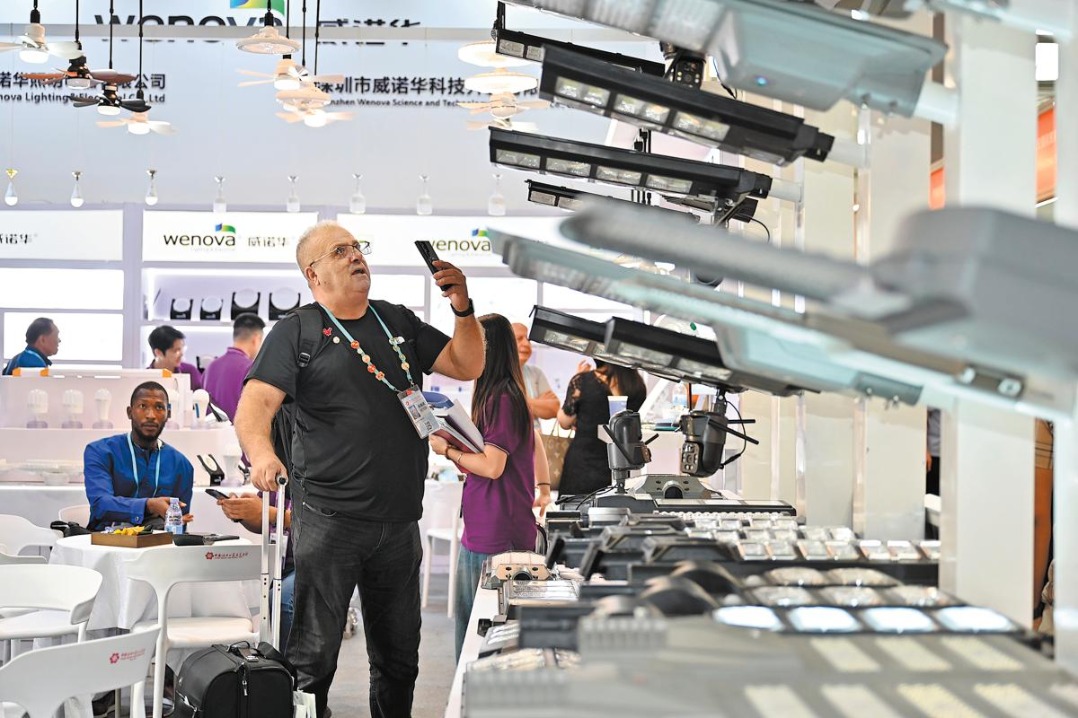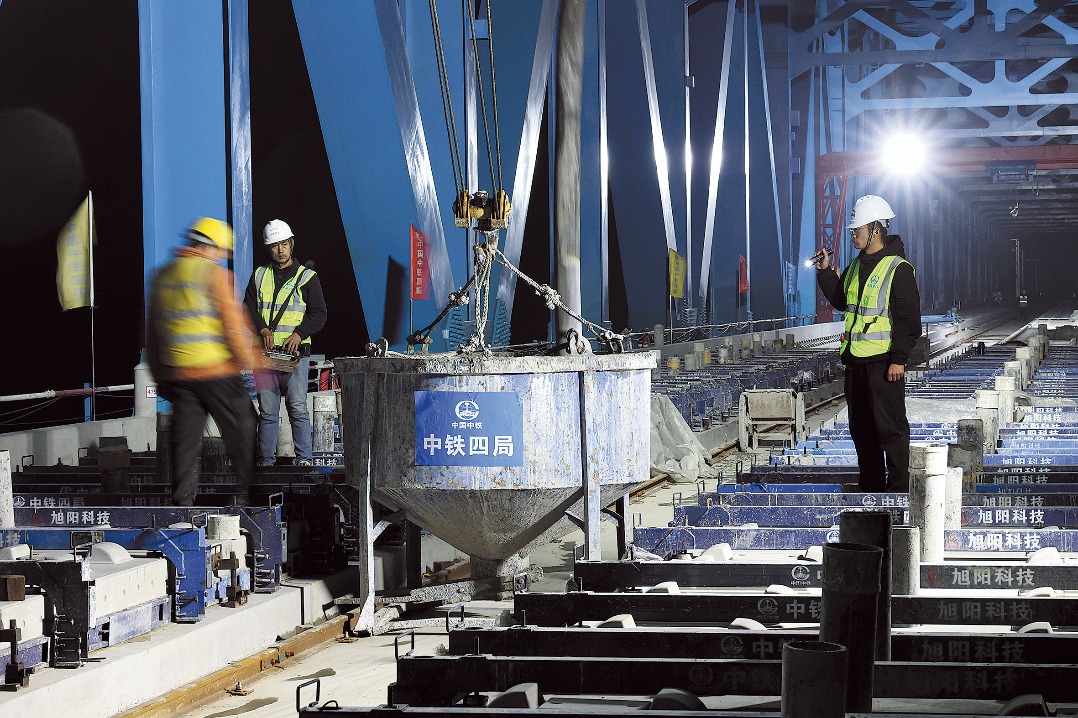Spreading out all its tentacles

The Octopus has become HK's name card, nearly 20 years after its debut. As Emma Dai reports, the smart-card operator is going the extra mile to scale new heights.
It's been almost two decades since Octopus made its debut in Hong Kong, and has since become the city's ubiquitous name card.
While the number of Octopus cards issued so far has surpassed the SAR's population, the one big question that has emerged is: What's next? Octopus is and will always be an easier solution for comprehensive services, says the head of the smart-card company.
"In terms of retail payment, we're facing more and more challenges today. But multi-tasking is our competitive edge. In one single card, we've packed in comprehensive services and what you need to do is just a simple touch. In terms of making life easier, no one else can beat us," Sunny Cheung Yiu-tong, chief executive officer of Octopus Holdings Ltd, told China Daily in an exclusive interview.
"Every day, the world comes up with new technologies, but popularization is always the key. Compared with other payment choices, Octopus is an easier and more accessible approach for everyone to adapt to - from school kids to the elderly - with just a HK$50 deposit," he says.
The first Octopus card was launched in Hong Kong in September 1997 as a convenient alternative to paying public transport fares with cash. By far, the smart-card operator had issued 30 million cards - more than four times the city's population of 7.24 million.
Today, above 70,000 point-of-sale (POS) terminals are beeping in the city, with 6,000 service providers across transportation facilities, retail stores and parking meters, as well as access control of countless residential and office buildings. Among them, the retail sector alone operates about 7,000 terminals. More than 13 million transactions are made using Octopus cards every day, generating a cash flow of HK$150 million.
A survey conducted last year found that among the 15-64 age group, 99 out 100 local residents use the Octopus card. Apart from reloading manually with cash, more than 1.5 million customers have signed up for the automatic add-value service provided by over 20 financial institutions, ensuring that their cards would never run out of value.
"We're pretty sure that, apart from local dwellers, acquiring an Octopus card is also the first thing many tourists would do after arriving in Hong Kong. Many of them would keep the card for future visits. The rising number of tourists in the SAR also drives our business," says Cheung.
Last year, 60.84 million people visited Hong Kong, representing an year-on-year growth of 12 percent. In the first nine months of this year, the number of visitor arrivals edged down by 0.5 percent to 44.42 million, according to latest data from the Hong Kong Tourism Board.
High-speed growth
However, a bottleneck has emerged following high-speed growth in the early days. Cheung reckons that the growth momentum for Octopus has been "steady" in recent years. While the card's penetration rate has been "very high" among various public transportation services, the retail industry, which started accepting the card in 2000, has become the major growth engine in terms of volume and revenue this decade. "Extending the retail coverage would help to increase the card's daily usability and lift user agglutinant among customers," Cheung says.
Traditionally used in convenience stores and supermarkets, the Octopus card is conquering new territory in the catering business against the backdrop of changing demographics in Hong Kong.
"Growth has been fast in Chinese restaurants, cha chaan teng and fast-food stations in the last two years," says Cheung.
"Despite rising labor costs, an acute shortage of manpower has become an increasingly pressing problem for the catering sector. More and more mid-priced, dining-out places are turning to Octopus terminals, which is a much faster channel than paying with cash. With the service, both white- and blue-collar workers no longer need to queue up at the cashier's counter in restaurants after a lunch on weekdays," he says.
To solve the labor shortage problem, Octopus also cooperates with major fast-food restaurant operators, such as Cafe de Coral, Maxim's and McDonald's, to develop self-help ordering systems so that customers can first select their food on a vending machine , or with their mobile phones, and then pay with the Octopus card when collecting the food. This saves them a lot of time queuing up at the pay counter.
"It's not hard to do as long as the operator is willing to update the ordering system and adjust the procedures. We would advise them to combine payment and services to produce faster services at a lower cost," Cheung says. "It's not just for the catering industry. Integrating the payment system and self-help counters in supermarkets or vending machines is a trend."
Changing concept
According to Cheung, Octopus has never changed its focus on payments of small amounts. But over time, the concept of "small amounts" is changing. "Today, an average meal could cost HK$100 or above," he notes. "On the other hand, many people are still paying cash at supermarkets, for instance. There is a psychological barrier in the further use of the Octopus card, but the chances for growth are plenty."
Cheung says one of the growth opportunities lies with online payment. In February last year, Octopus began collaborating with Alipay and Taobao Marketplace to facilitate online purchases on Taobao.com - the mainland e-commerce platform launched by tech giant Alibaba Group. With a registered Octopus card and an app installed on mobile devices, users can complete payments on the shopping website.
"Hong Kong people are now known to shop mainly on mainland e-commerce platforms like Taobao and foreign websites, such as Amazon. Over time, we hope to cooperate with more shopping websites to provide one more online payment choice, other than credit cards, for local consumers," he says.
Beyond Hong Kong, Cheung expects to gradually penetrate major cities on the mainland. In 2012, Octopus teamed up with Shenzhentong Co Ltd and Lingnan Pass Company Ltd - its counterparts in Guangdong province - to issue co-named cards. The Octopus-Lingnan Pass enables users to pay in Hong Kong and 17 Guangdong cities with a single card, whereas the Hu Tong Xing card allows payments in both Shenzhen and the SAR.
So far, more than 40,000 users have chosen the service, mostly people who commute regularly between Hong Kong and the mainland.
"It would take time for these cards to become as popular as the Octopus," Cheung argues. "Ideally, we would prefer one card for all payments in the world. But there are hurdles in terms of common technology standards, a united clearing system and regulatory requirements."
"In the short term, we look forward to a single-card solution for the entire Pearl River Delta region, and this would be the next breakthrough."
Contact the writer at emmadai@chinadailyhk.com
Today's Top News
- Philosophy has resonance across globe
- Nexperia's China unit pledges stable chip supply despite Dutch headwinds
- HK urged to advance nation's strength, self-reliance
- Li stresses importance of Sino-Russian ties
- Defense pact between Manila and Ottawa potential catalyst for regional instability: China Daily editorial
- Institutional strengths key to sustainable progress: China Daily editorial






























